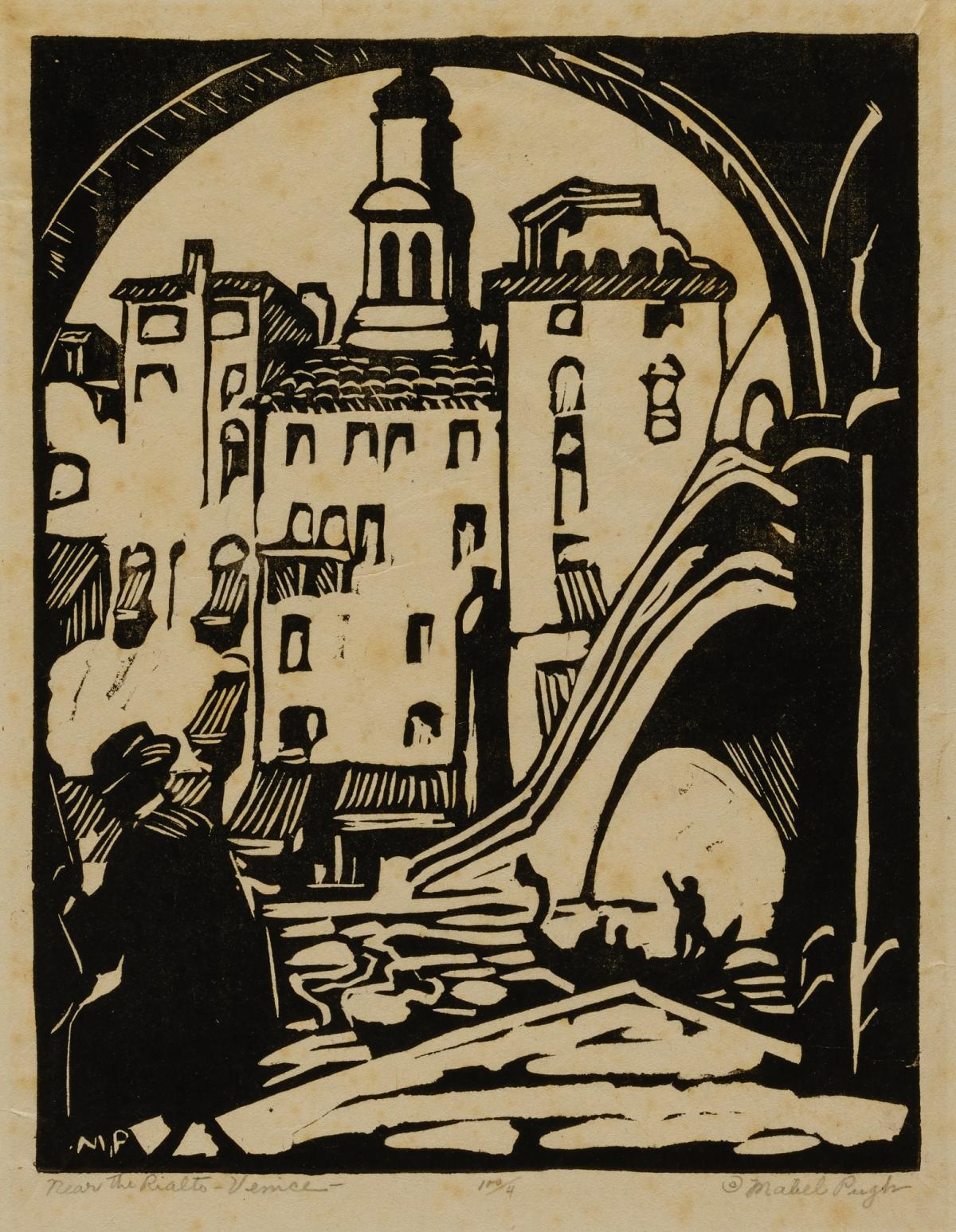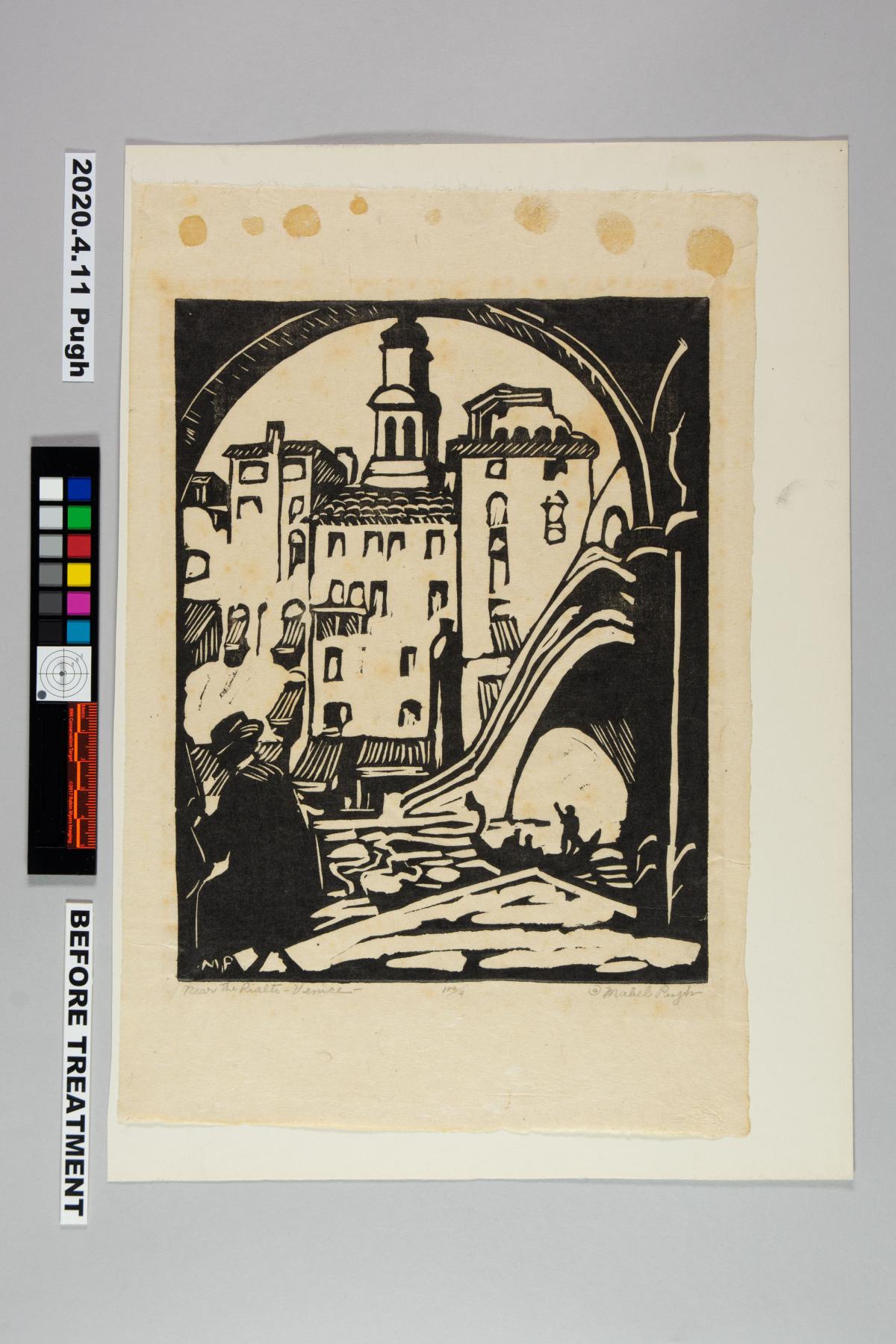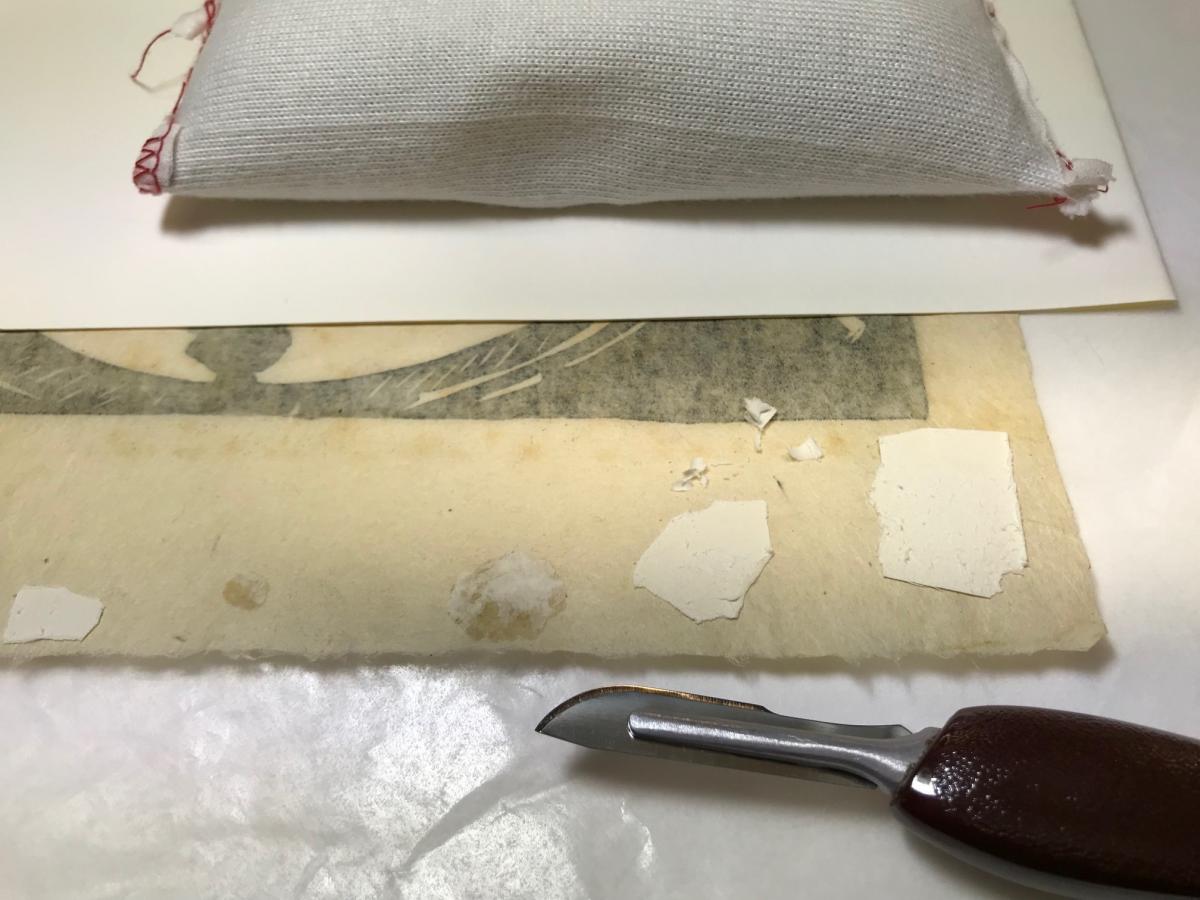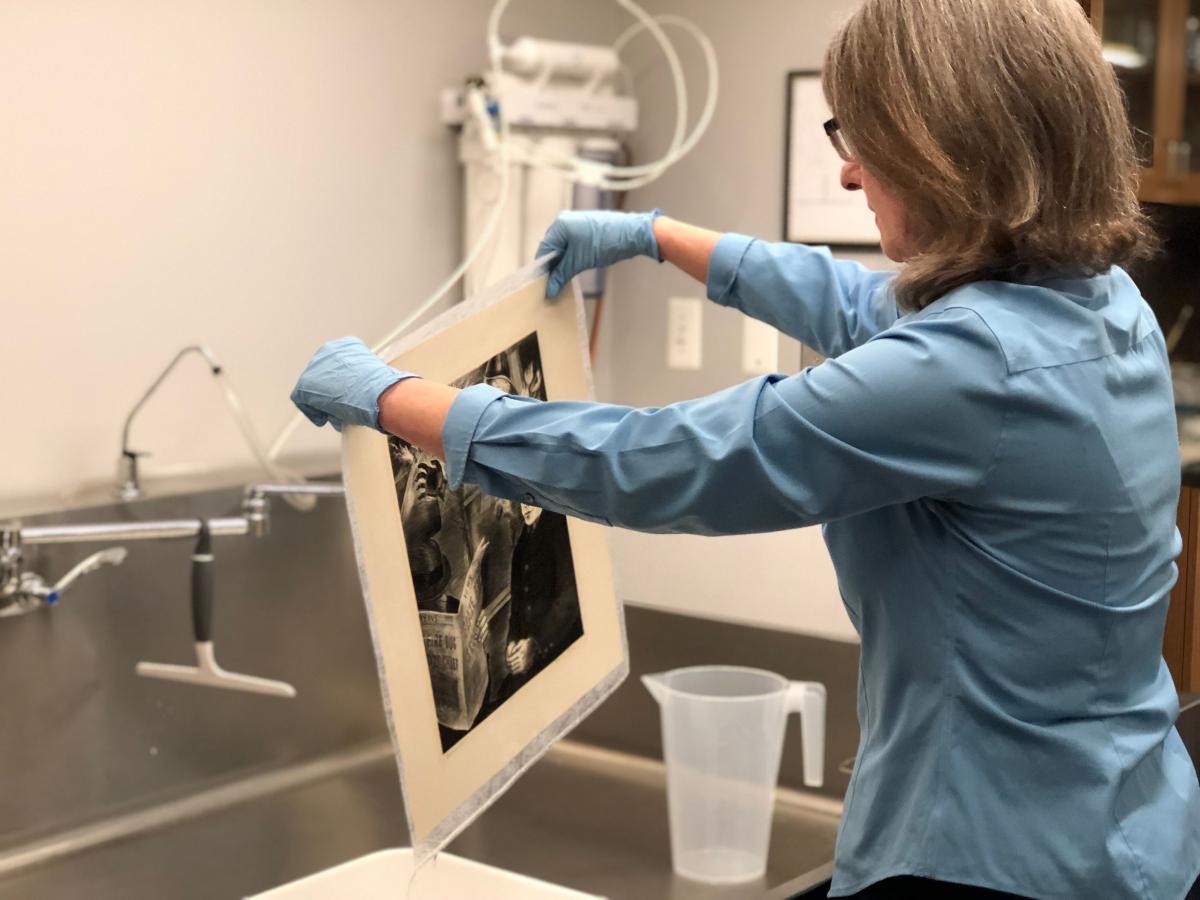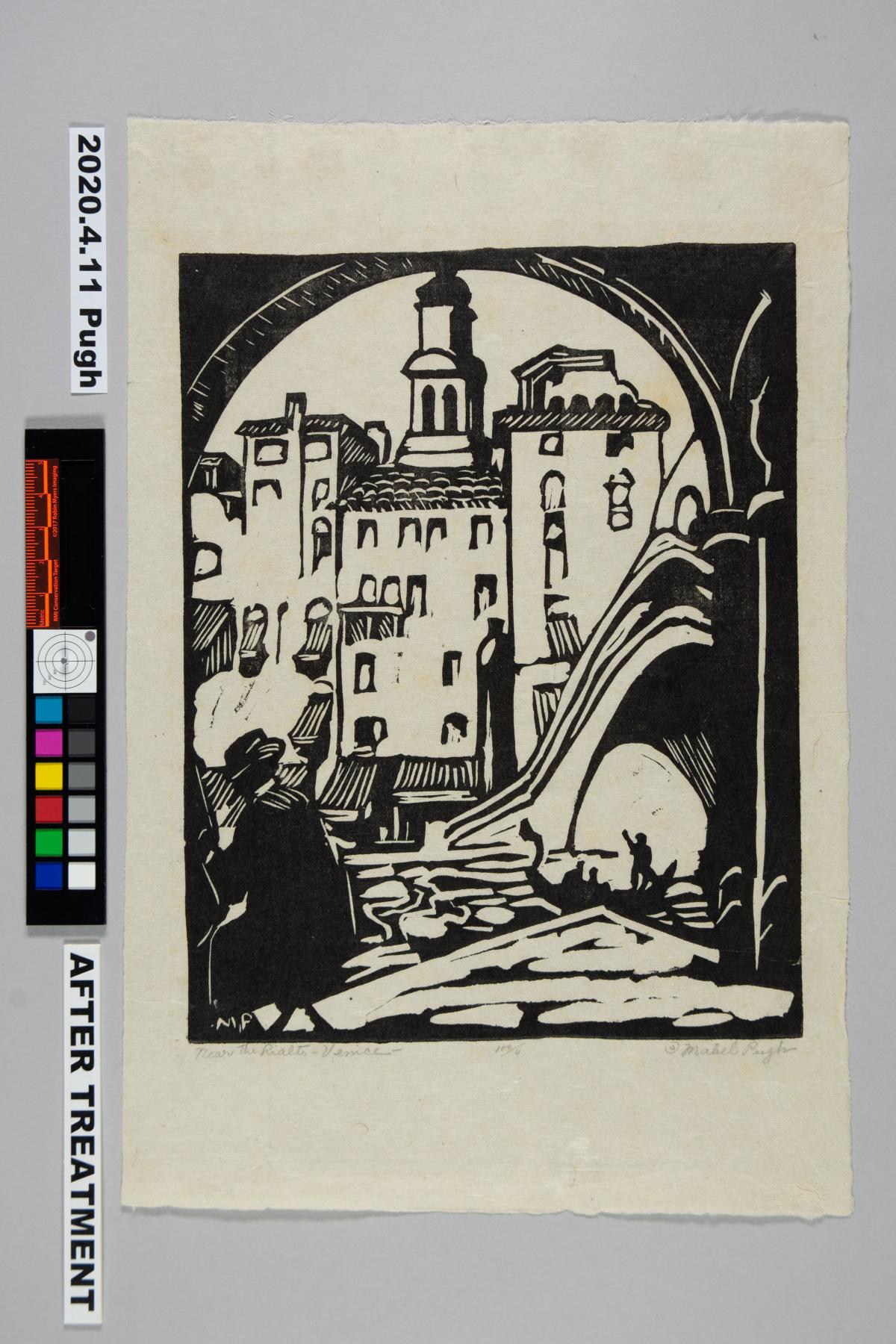Many visitors to SAAM’s Lunder Conservation Center are surprised to see a large sink in the paper conservation lab. They often ask: “What is the sink used for? Doesn't water damage paper?” Certainly, unplanned contact between water and a print, drawing, or photograph is an emergency which can, in some cases, result in permanent damage. Also, our everyday experience with high levels of humidity in the air reveals such problematic impacts on paper as distortions and even mold growth. At the same time, paper conservators, with extensive knowledge and experience, can use water to treat a variety of problems with artworks on paper, stabilizing and improving its appearance.
As SAAM’s paper conservator, I had the opportunity to examine and treat several artworks for the exhibition Sargent, Whistler, and Venetian Glass: American Artists and the Magic of Murano. One of these artworks, a linoleum cut print by Mabel Pugh entitled Near the Rialto, Venice, required a washing treatment to reduce discolored adhesive and several types of staining.
Art conservators generally endeavor to perform treatments that remain reversible in case an artwork needs further treatment again or improved methods become available in the future. However, washing treatments are irreversible, and their benefits must be carefully weighed against potential risks or unwanted changes in an artwork. Final decisions about proposed treatments are made collaboratively between conservators and museum curators who are responsible for a particular artwork. Washing treatments must be performed in a very controlled manner with the conservator constantly selecting from many variations and reassessing results throughout the process. Each judgment also informs the next step of the treatment. While much of our work is predictable based on our familiarity with artworks and our extensive experience, conservators must remain continually mindful, expecting the unexpected!
A thorough examination by the conservator is necessary before treatment as it helps us understand a particular artwork's physical and aesthetic characteristics, as well as its current condition. The Pugh print was executed in black ink on a lightweight Japanese paper. I noticed the uneven quality of the inking, with minute voids in several areas, such as in the arch at the top left. I also noticed the surface texture of the paper and the slight dimensionality of the printed areas. Many original characteristics in artworks on paper can be quite subtle and must be preserved during treatment.
As seen in the image taken before treatment, the print was mounted along its top border to a secondary support: poor quality, wood pulp-containing and heavily acidic paper board. Large, circular spots of yellowed adhesive are visible along the top of the print. The paper is also yellowed overall, especially within and around the image where it presumably was exposed to excessive light in a previous window mat. Note, too, several somewhat circular, yellow-brown stains within the image, especially in the sky area below the arch. Called “foxing” due to its color, these stains are thought to originate from metallic impurities in the paper and/or microbiological attack, enhanced by overly high relative humidity.
My previous experience treating similar prints suggested that a washing treatment would be effective and appropriate, given that the printing ink was most likely oil based. To be certain, however, I performed “spot testing”: simulating treatment on a much-reduced scale using small droplets of water-based cleaning solutions on discrete areas of the print to confirm the ink would be stable. The print was first separated from the mount by carefully undercutting the attached areas using a surgical scalpel followed by scraping off excess mount paper. The print was gently surface cleaned in non-design areas using grated plastic eraser.
As with most conservation procedures, several variations in washing were available to me. Based on my examination, I decided that immersion would be safe. Using photographic trays and working in our stainless-steel sink, I placed the artwork in a series of baths, using highly purified water which I “conditioned” with purified water and added beneficial chemicals. Before the first bath, I placed the print on a thin, polyester fabric support and lightly sprayed it with the treated water: this humidifies the print and prepares it for immersion. The number of baths and the target pH of each one depends upon the artwork's response and the amount of discoloration that is released. I allowed the print to dry after the first two baths to assess results. After the final bath, I first air-dried the print for about half an hour, and then dried it between layers of smooth, polyester fabric and thick papermaker's felts. This approach reduced distortion in the previously adhered areas at the top, while maintaining the subtle textures of the print's paper surface and printed design. This image shows the print during treatment with some yellow discoloration visible in the wash water.
As one can imagine, wet paper is especially fragile and must be handled with care. In this image, I am removing a different print from a water bath, using a polyester support.
The washing treatment for the Pugh print was successful! As you can see, the print is brighter with the adhesive and foxing stains greatly reduced. The paper itself is more stable after the removal of the acidic deterioration products.














